Operationalizing Mass Customization in Manufacturing SMEs—A Systematic Literature Review
Abstract
:1. Introduction
2. Research Methodology
3. Literature Review
3.1. Industry 4.0
3.2. Small and Medium-Sized Enterprises (SME)
3.3. Agility
3.4. Mass Customization
3.5. Integration of the Principles of Mass Customization
4. Discussion
5. Conclusions
Author Contributions
Funding
Institutional Review Board Statement
Informed Consent Statement
Data Availability Statement
Conflicts of Interest
References
- Vinardi, C. Les Défis du Lean à l’ère de la Mondialisation et de L’industrie 4.0; Université de Technologie de Compiègne: Compiègne, France, 2019. [Google Scholar]
- Han, H.; Trimi, S. Towards a data science platform for improving SME collaboration through Industry 4.0 technologies. Technol. Forecast. Soc. Chang. 2022, 174, 121242. [Google Scholar] [CrossRef]
- Dutta, G.; Kumar, R.; Sindhwani, R.; Singh, R.K. Digitalization priorities of quality control processes for SMEs: A conceptual study in perspective of Industry 4.0 adoption. J. Intell. Manuf. 2021, 32, 1679–1698. [Google Scholar] [CrossRef]
- OCDE. Les petites et moyennes entreprises: Force locale, action mondiale. Synthèses De L’ocde 2000, 1–8. [Google Scholar]
- Abdulnour, S.; Baril, C.; Abdulnour, G.; Gamache, S. Implementation of Industry 4.0 Principles and Tools: Simulation and Case Study in a Manufacturing SME. Sustainability 2022, 14, 6336. [Google Scholar] [CrossRef]
- Blanchet, M. Industrie 4.0 Nouvelle Donne Industrielle, Nouveau Modèle Économique. L’esprit du temps. 2016, Volume 46. Available online: https://www.cairn.info/revue-outre-terre2-2016-1-page-62.htm (accessed on 27 November 2022).
- Porter, M.E.; Heppelmann, J.E. How smart, connected products are transforming competition. Harv. Bus. Rev. 2014, 92, 64–88. [Google Scholar]
- Forgues, D.; Rivest, L.; Danjou, C.; Meyer, J. De l’Industrie 4.0 à la Construction 4.0. Influencez L’avenir. In Proceedings of the Congrès 2019: Influencez L’avenir, Montréal, QC, Canada, 15–16 March 2019. [Google Scholar]
- Aravindaraj, K.; Rajan Chinna, P. A systematic literature review of integration of industry 4.0 and warehouse management to achieve Sustainable Development Goals (SDGs). Clean. Logist. Supply Chain 2022, 5, 100072. [Google Scholar] [CrossRef]
- Saniuk, S.; Grabowska, S.; Gajdzik, B.Z. Personalization of products in the industry 4.0 concept and its impact on achieving a higher level of sustainable consumption. Energies 2020, 13, 5895. [Google Scholar] [CrossRef]
- Cannas, V.G.; Masi, A.; Pero, M.; Brunø, T.D. Implementing configurators to enable mass customization in the Engineer-to-Order industry: A multiple case study research. Prod. Plan. Control 2022, 33, 974–994. [Google Scholar] [CrossRef]
- Kim, D.Y.; Park, J.W.; Baek, S.; Park, K.B.; Kim, H.R.; Park, J.I.; Kim, H.S.; Kim, B.B.; Oh, H.Y.; Namgung, K.; et al. A modular factory testbed for the rapid reconfiguration of manufacturing systems. J. Intell. Manuf. 2020, 31, 661–680. [Google Scholar] [CrossRef]
- Arnaud, B. Chapitre 7. Les organisations apprenantes. In L’apprenance au Service de la Performance; EMS Editions: Caen, France, 2019; pp. 77–84. [Google Scholar] [CrossRef]
- Troise, C.; Corvello, V.; Ghobadian, A.; O’Regan, N. How can SMEs successfully navigate VUCA environment: The role of agility in the digital transformation era. Technol. Forecast. Soc. Chang. 2022, 174, 121227. [Google Scholar] [CrossRef]
- Schaefer, J.L.; Baierle, I.C.; Sellitto, M.A.; Siluk, J.C.M.; Furtado, J.C.; Nara, E.O.B. Competitiveness Scale as a Basis for Brazilian Small and Medium-Sized Enterprises. EMJ-Eng. Manag. J. 2021, 33, 255–271. [Google Scholar] [CrossRef]
- Rassmann, P.; Grafmüller, L.K. Exploring Drivers and Barriers for Sustainable Use of Resources: The Case of High-Tech Mass Customizers in the German Textile Industry. In Proceedings of the Customization 4.0: Proceedings of the 9th World Mass Customization & Personalization Conference (MCPC 2017), Aachen, Germany, 20–21 November 2017; Springer Proceedings in Business and Economics. pp. 301–313. [Google Scholar]
- Rassameethes, B.; Phusavat, K.; Pastuszak, Z.; Hidayanto, A.N.; Majava, J. From training to learning: Transition of a workplace for industry 4.0. Hum. Syst. Manag. 2021, 40, 777–787. [Google Scholar] [CrossRef]
- Genest, M.C.; Gamache, S. Prerequisites for the implementation of industry 4.0 in manufacturing SMEs. Procedia Manuf. 2020, 51, 1215–1220. [Google Scholar] [CrossRef]
- Skare, M.; de las Mercedes de Obesso, M.; Ribeiro-Navarrete, S. Digital transformation and European small and medium enterprises (SMEs): A comparative study using digital economy and society index data. Int. J. Inf. Manag. 2023, 68, 102594. [Google Scholar] [CrossRef]
- Sony, M.; Naik, S. Critical factors for the successful implementation of Industry 4.0: A review and future research direction. Prod. Plan. Control 2020, 31, 799–815. [Google Scholar] [CrossRef]
- Hoyer, C.; Gunawan, I.; Reaiche, C.H. The Implementation of Industry 4.0—A Systematic Literature Review of the Key Factors. Syst. Res. Behav. Sci. 2020, 37, 557–578. [Google Scholar] [CrossRef]
- Ghobakhloo, M.; Iranmanesh, M.; Vilkas, M.; Grybauskas, A.; Amran, A. Drivers and barriers of Industry 4.0 technology adoption among manufacturing SMEs: A systematic review and transformation roadmap. J. Manuf. Technol. Manag. 2022, 33, 1029–1058. [Google Scholar] [CrossRef]
- Huang, C.-J.; Talla Chicoma, E.D.; Huang, Y.-H. Evaluating the Factors that are Affecting the Implementation of Industry Technologies in Manufacturing MSMEs the Case of Peru. Processes 2019, 7, 161. [Google Scholar] [CrossRef]
- Chatterjee, S.; Rana, N.P.; Dwivedi, Y.K.; Baabdullah, A.M. Understanding AI adoption in manufacturing and production firms using an integrated TAM-TOE model. Technol. Forecast. Soc. Chang. 2021, 170, 120880. [Google Scholar] [CrossRef]
- Somohano-Rodríguez, F.M.; Madrid-Guijarro, A. Do industry 4.0 technologies improve Cantabrian manufacturing smes performance? The role played by industry competition. Technol. Soc. 2022, 70, 102019. [Google Scholar] [CrossRef]
- Ghobakhloo, M.; Ching, N.T. Adoption of digital technologies of smart manufacturing in SMEs. J. Ind. Inf. Integr. 2019, 16, 100107. [Google Scholar] [CrossRef]
- Hopkins, J.L. An investigation into emerging industry 4.0 technologies as drivers of supply chain innovation in Australia. Comput. Ind. 2021, 125, 103323. [Google Scholar] [CrossRef]
- Horváth, D.; Szabó, R.Z. Driving forces and barriers of Industry 4.0: Do multinational and small and medium-sized companies have equal opportunities? Technol. Forecast. Soc. Chang. 2019, 146, 119–132. [Google Scholar] [CrossRef]
- van Lopik, K.; Sinclair, M.; Sharpe, R.; Conway, P.; West, A. Developing augmented reality capabilities for industry 4.0 small enterprises: Lessons learnt from a content authoring case study. Comput. Ind. 2020, 117, 103208. [Google Scholar] [CrossRef]
- Ratnasingam, J.; Yi, L.Y.; Abdul Azim, A.; Halis, R.; Choon Liat, L.; Khoo, A.; Mat Daud, M.; Senin, A.L.; Ab Latib, H.; Bueno, M.V.; et al. Assessing the awareness and readiness of the Malaysian furniture industry for industry 4.0. BioResources 2020, 15, 4866–4885. [Google Scholar] [CrossRef]
- Ghobakhloo, M.; Iranmanesh, M. Digital transformation success under Industry 4.0: A strategic guideline for manufacturing SMEs. J. Manuf. Technol. Manag. 2021, 32, 1533–1556. [Google Scholar] [CrossRef]
- Stentoft, J.; Adsbøll Wickstrøm, K.; Philipsen, K.; Haug, A. Drivers and barriers for Industry 4.0 readiness and practice: Empirical evidence from small and medium-sized manufacturers. Prod. Plan. Control 2021, 32, 811–828. [Google Scholar] [CrossRef]
- Moeuf, A.; Lamouri, S.; Pellerin, R.; Tamayo-Giraldo, S.; Tobon-Valencia, E.; Eburdy, R. Identification of critical success factors, risks and opportunities of Industry 4.0 in SMEs. Int. J. Prod. Res. 2020, 58, 1384–1400. [Google Scholar] [CrossRef]
- Pech, M.; Vrchota, J. Classification of Small- and Medium-Sized Enterprises Based on the Level of Industry 4.0 Implementation. Appl. Sci. 2020, 10, 5150. [Google Scholar] [CrossRef]
- Garzoni, A.; De Turi, I.; Secundo, G.; Del Vecchio, P. Fostering digital transformation of SMEs: A four levels approach. Manag. Decis. 2020, 58, 1543–1562. [Google Scholar] [CrossRef]
- Türkeş, M.C.; Oncioiu, I.; Aslam, H.D.; Marin-Pantelescu, A.; Topor, D.I.; Căpuşneanu, S. Drivers and barriers in using industry 4.0: A perspective of SMEs in Romania. Processes 2019, 7, 153. [Google Scholar] [CrossRef] [Green Version]
- Arcidiacono, F.; Ancarani, A.; Di Mauro, C.; Schupp, F. Where the rubber meets the road. Industry 4.0 among SMEs in the automotive sector. IEEE Eng. Manag. Rev. 2019, 47, 86–93. [Google Scholar] [CrossRef]
- Cimini, C.; Boffelli, A.; Lagorio, A.; Kalchschmidt, M.; Pinto, R. How do industry 4.0 technologies influence organisational change? An empirical analysis of Italian SMEs. J. Manuf. Technol. Manag. 2021, 32, 695–721. [Google Scholar] [CrossRef]
- Ali, M.H.; Chung, L.; Kumar, A.; Zailani, S.; Tan, K.H. A sustainable Blockchain framework for the halal food supply chain: Lessons from Malaysia. Technol. Forecast. Soc. Chang. 2021, 170, 120870. [Google Scholar] [CrossRef]
- Ghobakhloo, M.; Fathi, M. Corporate survival in Industry 4.0 era: The enabling role of lean-digitized manufacturing. J. Manuf. Technol. Manag. 2020, 31, 1–30. [Google Scholar] [CrossRef]
- Ingaldi, M.; Ulewicz, R. Problems with the implementation of industry 4.0 in enterprises from the SME sector. Sustainability 2020, 12, 217. [Google Scholar] [CrossRef]
- Davies, R.; Coole, T.; Smith, A. Review of Socio-technical Considerations to Ensure Successful Implementation of Industry 4.0. Procedia Manuf. 2017, 11, 1288–1295. [Google Scholar] [CrossRef]
- Da Silva, V.L.; Kovaleski, J.L.; Pagani, R.N.; Silva, J.D.M.; Corsi, A. Implementation of Industry 4.0 concept in companies: Empirical evidences. Int. J. Comput. Integr. Manuf. 2020, 33, 325–342. [Google Scholar] [CrossRef]
- Del Vecchio, P.; Di Minin, A.; Petruzzelli, A.M.; Panniello, U.; Pirri, S. Big data for open innovation in SMEs and large corporations: Trends, opportunities, and challenges. Creat. Innov. Manag. 2018, 27, 6–22. [Google Scholar] [CrossRef]
- Torres, O. Les PME. 1999, p. 51. Available online: https://www.oliviertorres.net/travaux/pdf/pmetorres.pdf (accessed on 27 November 2022).
- Castagna, F.; Centobelli, P.; Cerchione, R.; Oropallo, E.; Shashi; Strazzullo, S. Assessing SMEs’ internationalisation strategies in action. Appl. Sci. 2020, 10, 4743. [Google Scholar] [CrossRef]
- Harris, G.; Yarbrough, A.; Abernathy, D.; Peters, C. Manufacturing Readiness for Digital Manufacturing. Manuf. Lett. 2019, 22, 16–18. [Google Scholar] [CrossRef]
- Mittal, S.; Khan, M.A.; Purohit, J.K.; Menon, K.; Romero, D.; Wuest, T. A smart manufacturing adoption framework for SMEs. Int. J. Prod. Res. 2020, 58, 1555–1573. [Google Scholar] [CrossRef]
- Shashi; Centobelli, P.; Cerchione, R.; Ertz, M. Agile supply chain management: Where did it come from and where will it go in the era of digital transformation? Ind. Mark. Manag. 2020, 90, 324–345. [Google Scholar] [CrossRef]
- Gupta, P. Modularity enablers: A tool for Industry 4.0. Life Cycle Reliab. Saf. Eng. 2019, 8, 157–163. [Google Scholar] [CrossRef]
- Gilchrist, A. Industry 4.0: The Industrial Internet of Things; Springer: Berlin/Heidelberg, Germany, 2016. [Google Scholar]
- Cohen, Y.; Faccio, M.; Galizia, F.G.; Mora, C.; Pilati, F. Assembly system configuration through Industry 4.0 principles: The expected change in the actual paradigms. IFAC-PapersOnLine 2017, 50, 14958–14963. [Google Scholar] [CrossRef]
- Qin, Z.; Lu, Y. Self-organizing manufacturing network: A paradigm towards smart manufacturing in mass personalization. J. Manuf. Syst. 2021, 60, 35–47. [Google Scholar] [CrossRef]
- Bouchard, S.; Abdulnour, G.; Gamache, S. Agility and Industry 4.0 Implementation Strategy in a Quebec Manufacturing SME. Sustainability 2022, 14, 7884. [Google Scholar] [CrossRef]
- Dutta, G.; Kumar, R.; Sindhwani, R.; Singh, R.K. Digital transformation priorities of India’s discrete manufacturing SMEs—A conceptual study in perspective of Industry 4.0. Compet. Rev. 2020, 30, 289–314. [Google Scholar] [CrossRef]
- Rauch, E.; Unterhofer, M.; Rojas, R.A.; Gualtieri, L.; Woschank, M.; Matt, D.T. A maturity level-based assessment tool to enhance the implementation of industry 4.0 in small and medium-sized enterprises. Sustainability 2020, 12, 3559. [Google Scholar] [CrossRef]
- Maganha, I.; Andersen, A.L.; Silva, C.; Ferreira, L.M.D.F. A Classification of the Barriers in the Implementation Process of Reconfigurability. In Lecture Notes in Mechanical Engineering; Springer: Berlin/Heidelberg, Germany, 2022; pp. 88–95. [Google Scholar] [CrossRef]
- Gamache, S.; Abdulnour, G.; Baril, C. Toward industry 4.0: Studies and practices in Quebec smes. In Proceedings of the 47th International Conference on Computers & Industrial Engineering 2017, Lisbon, Portugal, 11–13 October 2017. [Google Scholar]
- Gajdzik, B. Frameworks of the Maturity Model for Industry 4.0 with Assessment of Maturity Levels on the Example of the Segment of Steel Enterprises in Poland. J. Open Innov. Technol. Mark. Complex. 2022, 8, 77. [Google Scholar] [CrossRef]
- Mrugalska, B.; Ahmed, J. Organizational agility in industry 4.0: A systematic literature review. Sustainability 2021, 13, 8272. [Google Scholar] [CrossRef]
- Gajdzik, B. Key Directions in Changes from Steelworks 3.0 to Steelworks 4.0 with Analysis of Selected Technologies of Digitalizing the Steel Industry in Poland. Manag. Syst. Prod. Eng. 2022, 30, 46–53. [Google Scholar] [CrossRef]
- Cohen, S.L.; Pine Li, B.J. Mass customizing: The training industry. Train. Dev. 2007, 61, 50–54+55. [Google Scholar]
- Farr, E.R.P.; Piroozfar, P.A.E.; Robinson, D. BIM as a generic configurator for facilitation of customisation in the AEC industry. Autom. Constr. 2014, 45, 119–125. [Google Scholar] [CrossRef]
- Davis, S.M. From “future perfect”: Mass customizing. Plan. Rev. 1989, 17, 16–21. [Google Scholar] [CrossRef]
- Wang, Y.; Mo, D. Perception of time in the product configuration process: An empirical study. In Proceedings of the IEEE International Conference on Systems, Man, and Cybernetics, Toronto, ON, Canada, 11–14 October 2020; pp. 4340–4345. [Google Scholar]
- Brunoe, T.D.; Nielsen, K. Complexity Management in Mass Customization SMEs. Procedia CIRP 2016, 51, 38–43. [Google Scholar] [CrossRef]
- Dwivedi, P.K.; Kumar, G.; Singh, R.C. Challenges for Mass Customization in Industry 4.0 Environment: An Analysis Using Fuzzy TOPSIS Approach. In Lecture Notes in Mechanical Engineering; Springer Nature Singapore: Singapore, 2021; pp. 1079–1089. [Google Scholar]
- Kusiak, A. Open manufacturing: A design-for-resilience approach. Int. J. Prod. Res. 2020, 58, 4647–4658. [Google Scholar] [CrossRef]
- Salvador, F.; De Holan, P.M.; Piller, F. Cracking the code of mass customization. MIT Sloan Manag. Rev. 2009, 50, 71–78. [Google Scholar]
- Korneeva, E.; Hönigsberg, S.; Piller, F.T. Mass Customization Capabilities in Practice–Introducing the Mass into Customized Tech-Textiles in an SME Network. Int. J. Ind. Eng. Manag. 2021, 12, 115–128. [Google Scholar] [CrossRef]
- Kusiak, A.; Smith, M.R.; Song, Z. Planning product configurations based on sales data. IEEE Trans. Syst. Man Cybern. Part C Appl. Rev. 2007, 37, 602–609. [Google Scholar] [CrossRef]
- ElMaraghy, H.; Monostori, L.; Schuh, G.; ElMaraghy, W. Evolution and future of manufacturing systems. CIRP Ann. 2021, 70, 635–658. [Google Scholar] [CrossRef]
- Kusiak, A. Smart manufacturing. Int. J. Prod. Res. 2018, 56, 508–517. [Google Scholar] [CrossRef]
- Kusiak, A. Service manufacturing: Basic concepts and technologies. J. Manuf. Syst. 2019, 52, 198–204. [Google Scholar] [CrossRef]
- Koppenhagen, F.; Held, T. The implications of product modularisation on the development process, supplier integration and supply chain design in collaborative product development. Adv. Prod. Eng. Manag. 2021, 16, 82–98. [Google Scholar] [CrossRef]
- Piroozfar, P.; Farr, E.R.P.; Hvam, L.; Robinson, D.; Shafiee, S. Configuration platform for customisation of design, manufacturing and assembly processes of building façade systems: A building information modelling perspective. Autom. Constr. 2019, 106, 102914. [Google Scholar] [CrossRef]
- Bruun, H.P.L.; Mortensen, N.H.; Harlou, U. Interface diagram: Design tool for supporting the development of modularity in complex product systems. Concurr. Eng. Res. Appl. 2014, 22, 62–76. [Google Scholar] [CrossRef]
- Aheleroff, S.; Mostashiri, N.; Xu, X.; Zhong, R.Y. Mass Personalisation as a Service in Industry 4.0: A Resilient Response Case Study. Adv. Eng. Inform. 2021, 50, 101438. [Google Scholar] [CrossRef]
- Aheleroff, S.; Philip, R.; Zhong, R.Y.; Xu, X. The degree of mass personalisation under industry 4.0. Procedia CIRP 2019, 81, 1394–1399. [Google Scholar] [CrossRef]
- Aheleroff, S.; Zhong, R.Y. Iot-enabled personalisation for smart products and services in the context of industry 4.0. In Proceedings of the International Conference on Computers and Industrial Engineering, CIE, Auckland, New Zealand, 2–5 December 2018. [Google Scholar]
- Suzic, N.; Forza, C. Development of mass customization implementation guidelines for small and medium enterprises (SMEs). Prod. Plan. Control 2021. [Google Scholar] [CrossRef]
- Suzić, N.; Forza, C.; Trentin, A.; Anišić, Z. Implementation guidelines for mass customization: Current characteristics and suggestions for improvement. Prod. Plan. Control 2018, 29, 856–871. [Google Scholar] [CrossRef]
- Suzić, N.; Sandrin, E.; Suzić, S.; Forza, C.; Trentin, A.; Anišić, Z. Implementation guidelines for mass customization: A researcher-oriented view. Int. J. Ind. Eng. Manag. 2018, 9, 229–243. [Google Scholar] [CrossRef]
- Hernandez, G.; Allen, J.K.; Mistree, F. Platform design for customizable products as a problem of access in a geometric space. Eng. Optim. 2003, 35, 229–254. [Google Scholar] [CrossRef]
- Shuyou, Z.; Wenqi, G.; Zili, W.; Lemiao, Q.; Huifang, Z. A heuristic configuration solving process planning method for mechanical product configuration by imitating the crystal crystallization process. Int. J. Adv. Manuf. Technol. 2021, 116, 611–628. [Google Scholar] [CrossRef]
- Svensson, C.; Barfod, A. Limits and opportunities in mass customization for “build to order” SMEs. Comput. Ind. 2002, 49, 77–89. [Google Scholar] [CrossRef]
- Ullah, I.; Narain, R. Analyzing the barriers to implementation of mass customization in Indian SMEs using integrated ISM-MICMAC and SEM. J. Adv. Manag. Res. 2020, 18, 323–349. [Google Scholar] [CrossRef]
- Waniak-Michalak, H.; Michalak, J. Development of a successful microfinancing system-actor-network theory perspective. Management 2019, 24, 39–61. [Google Scholar] [CrossRef] [Green Version]
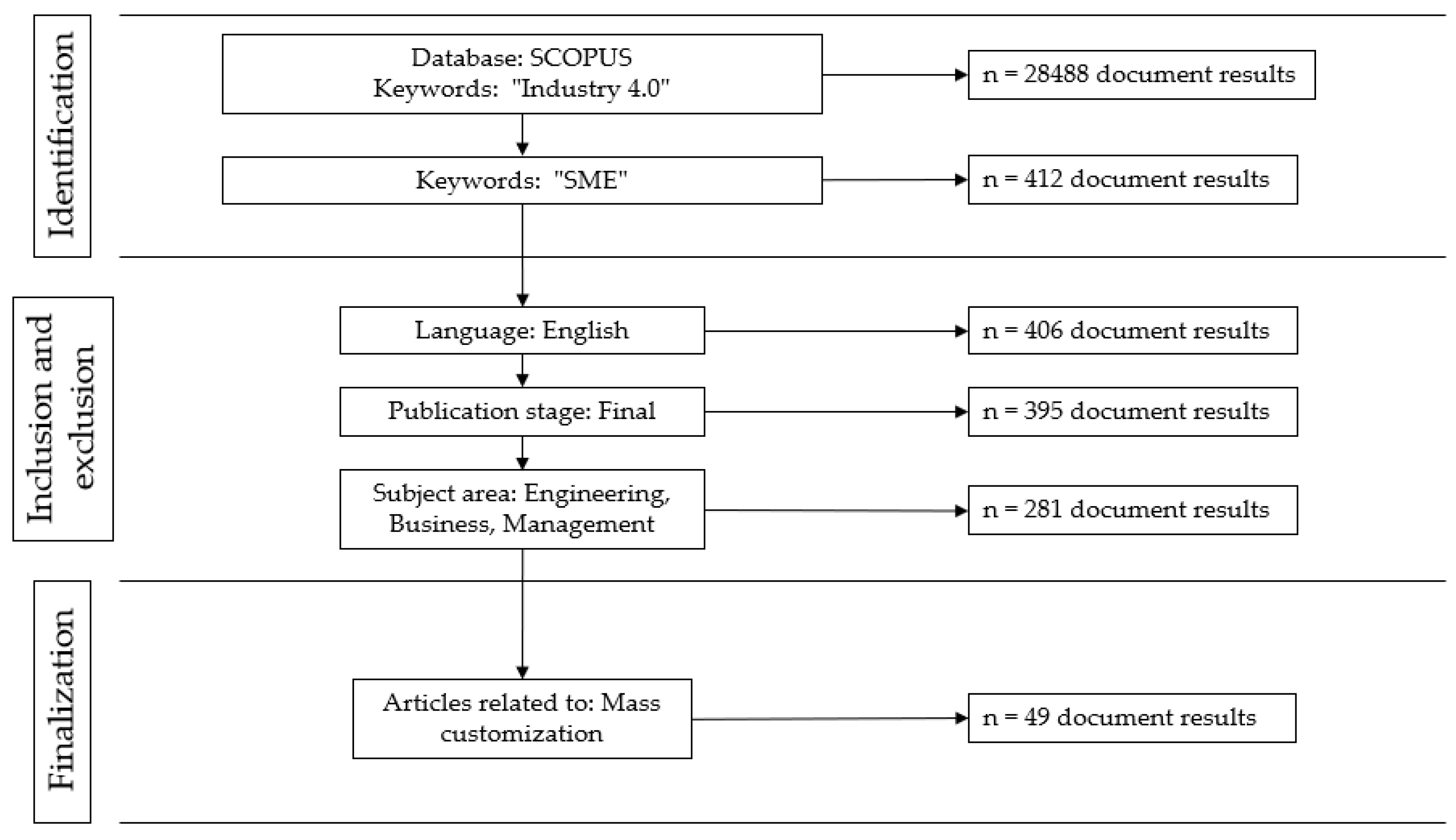
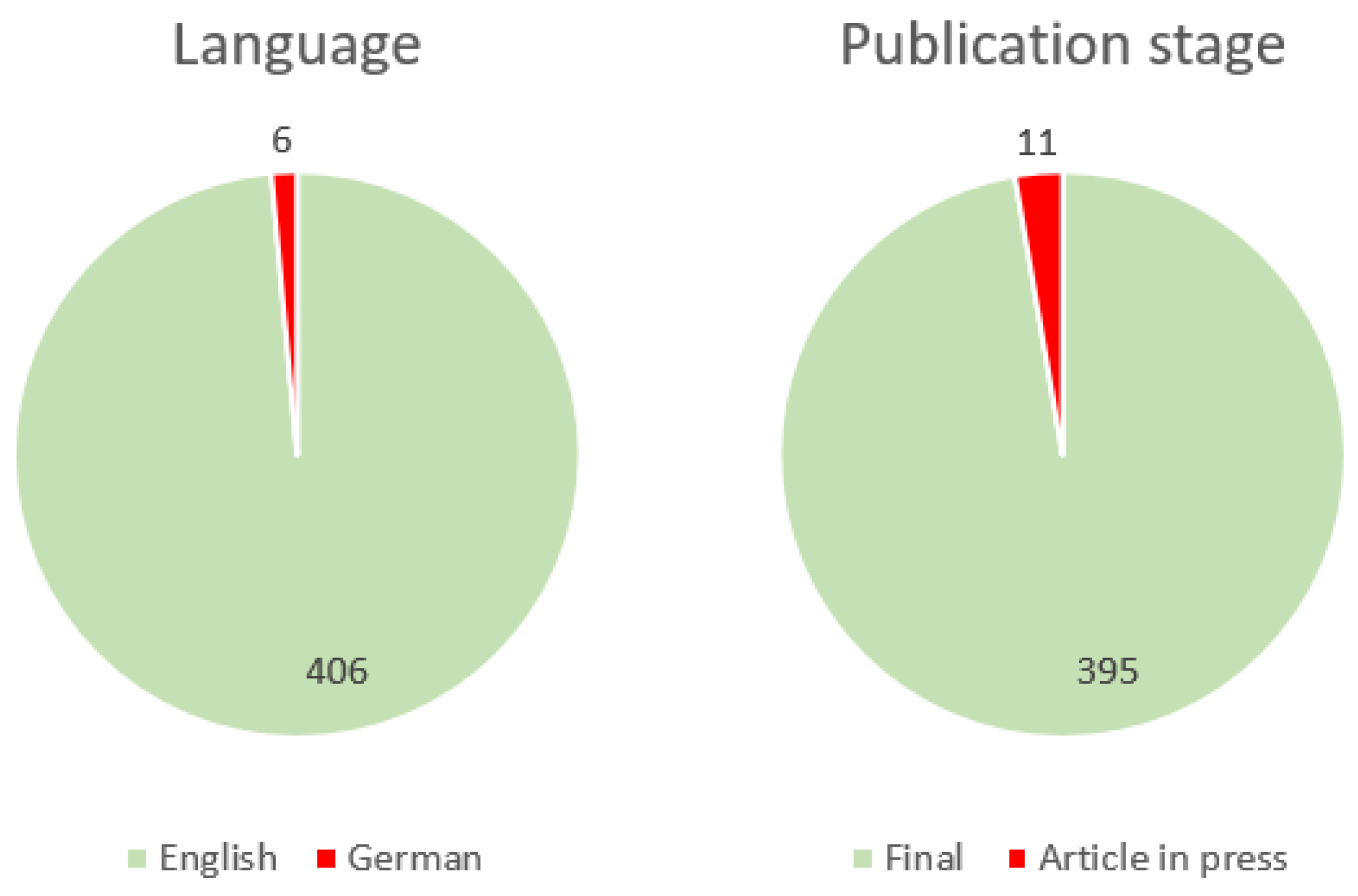
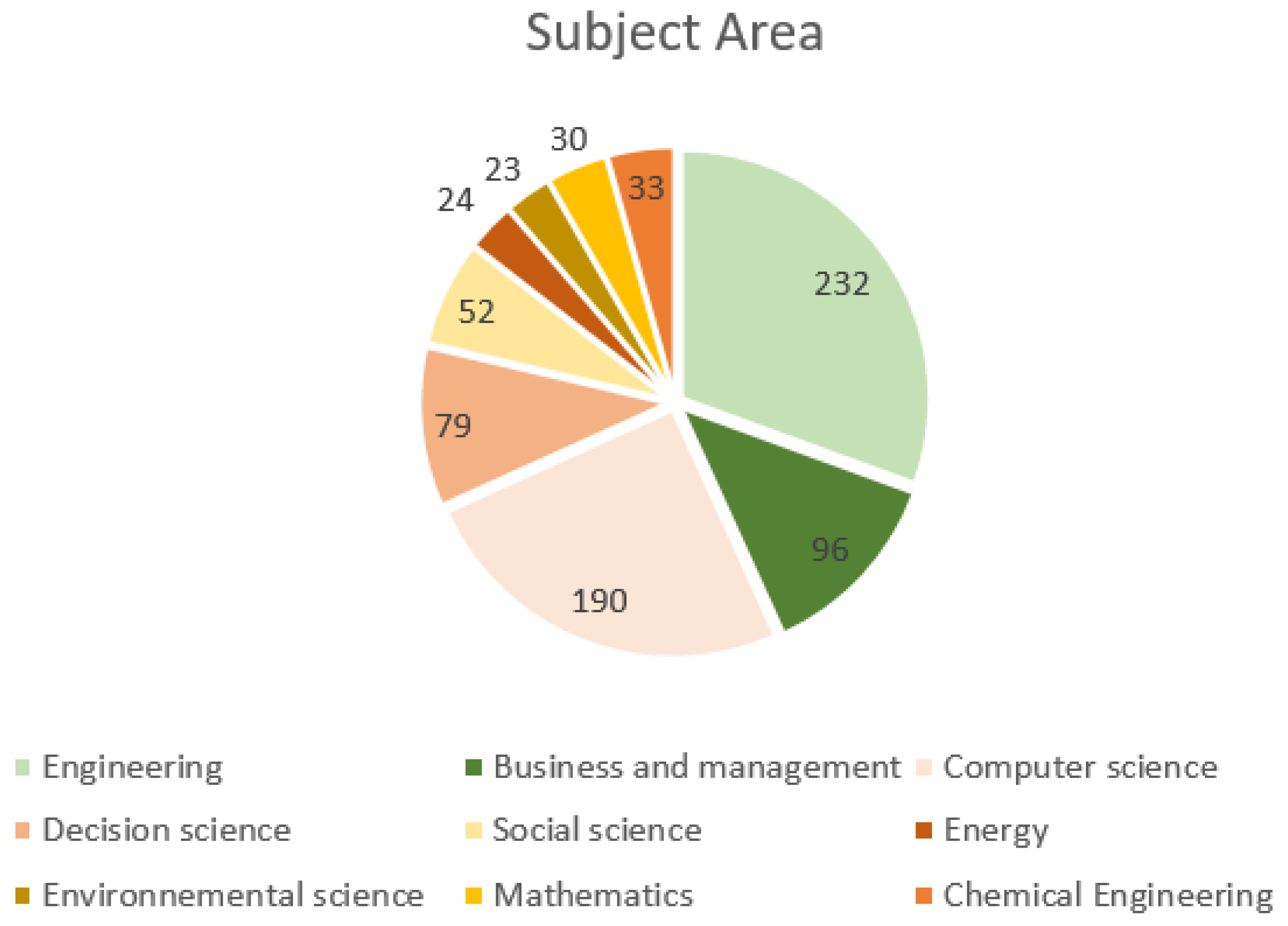
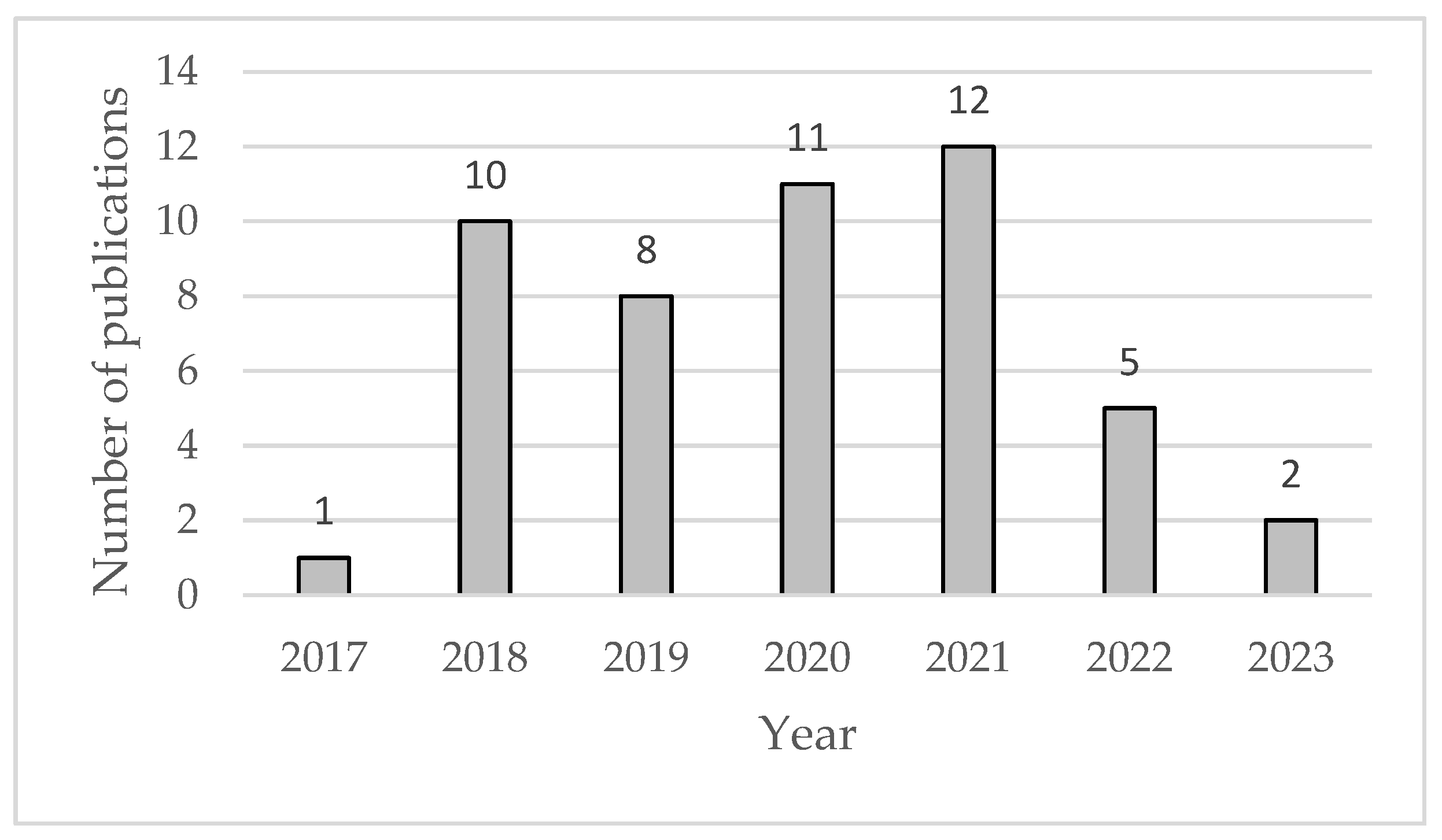
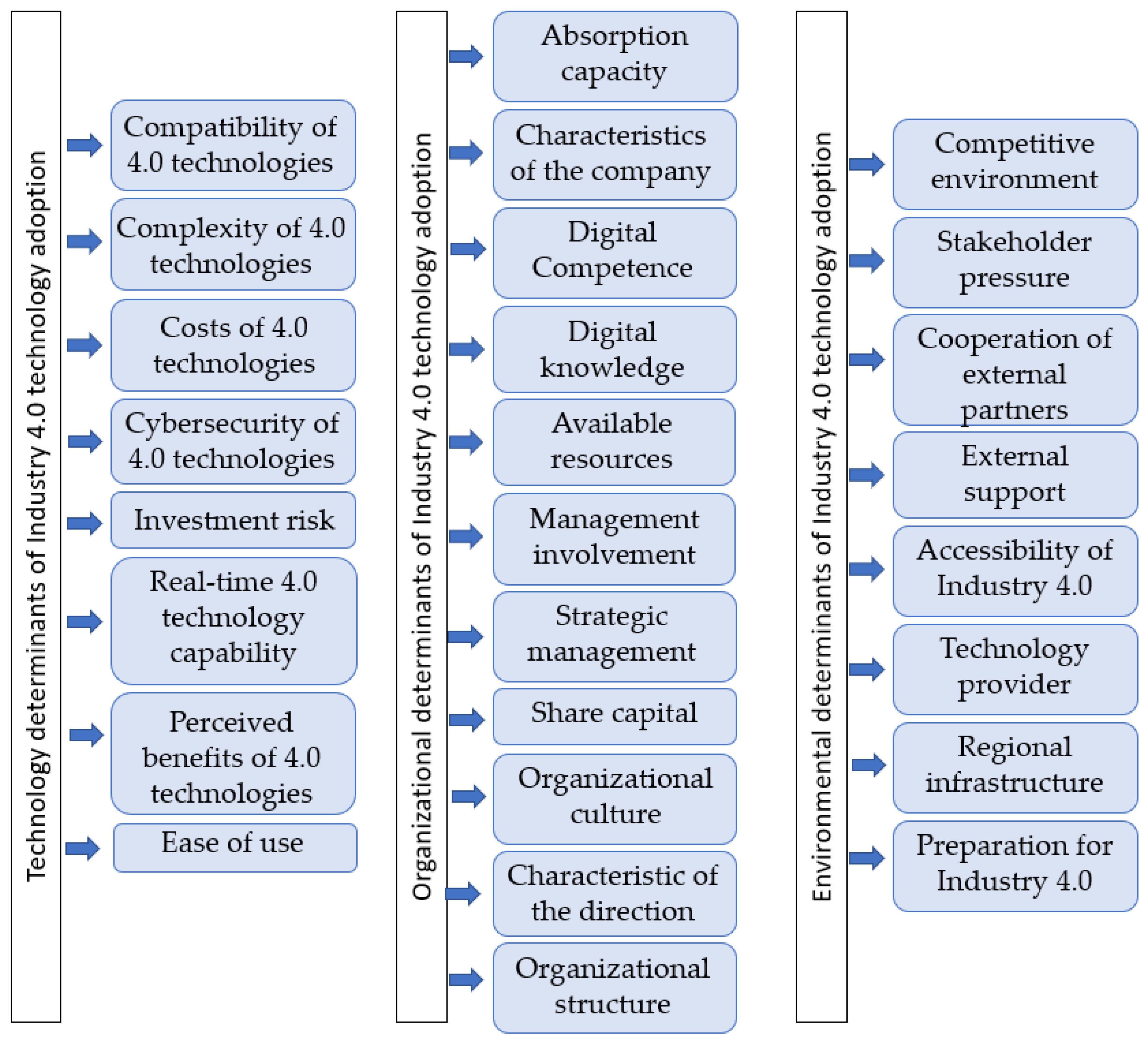
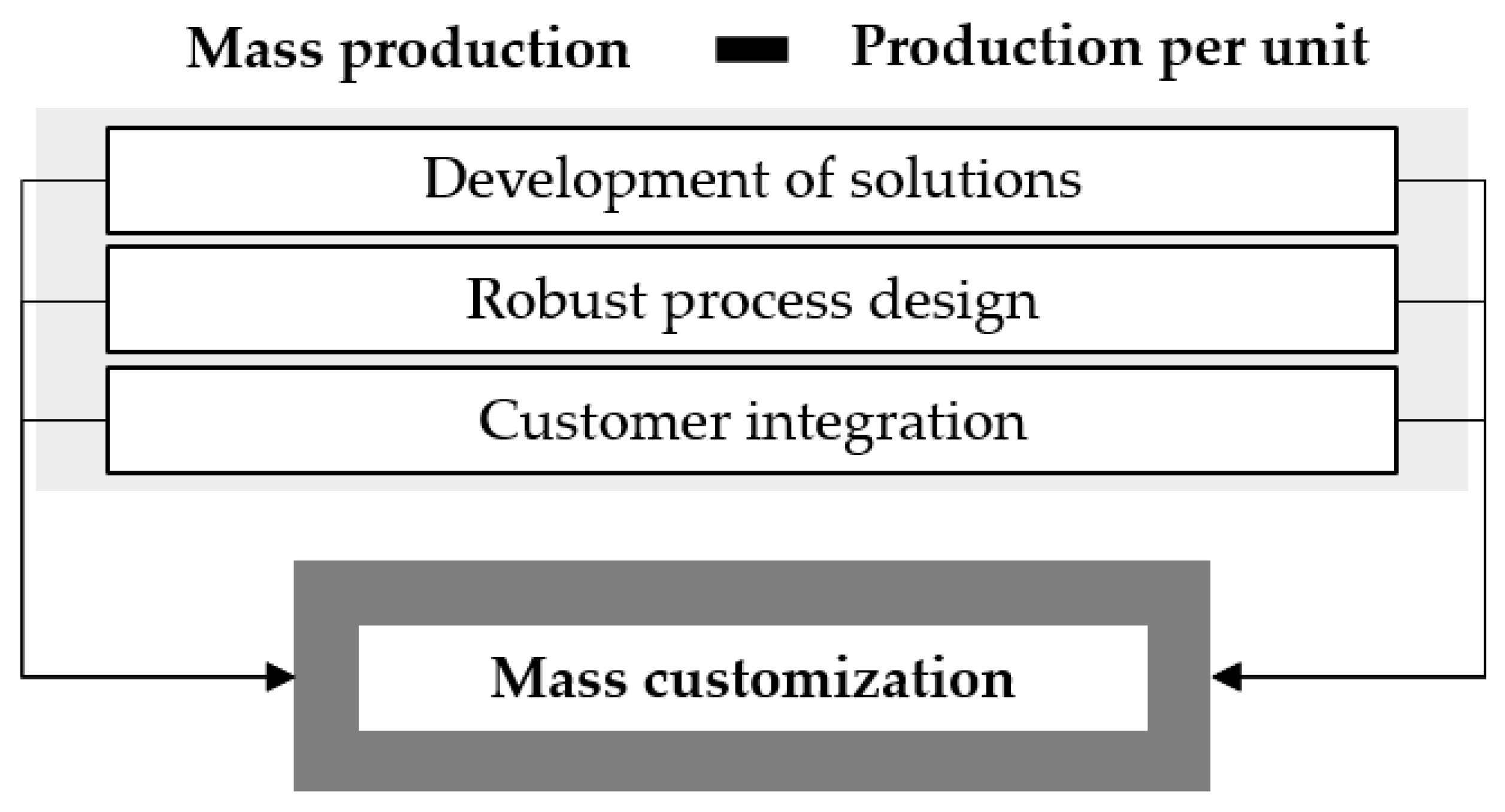
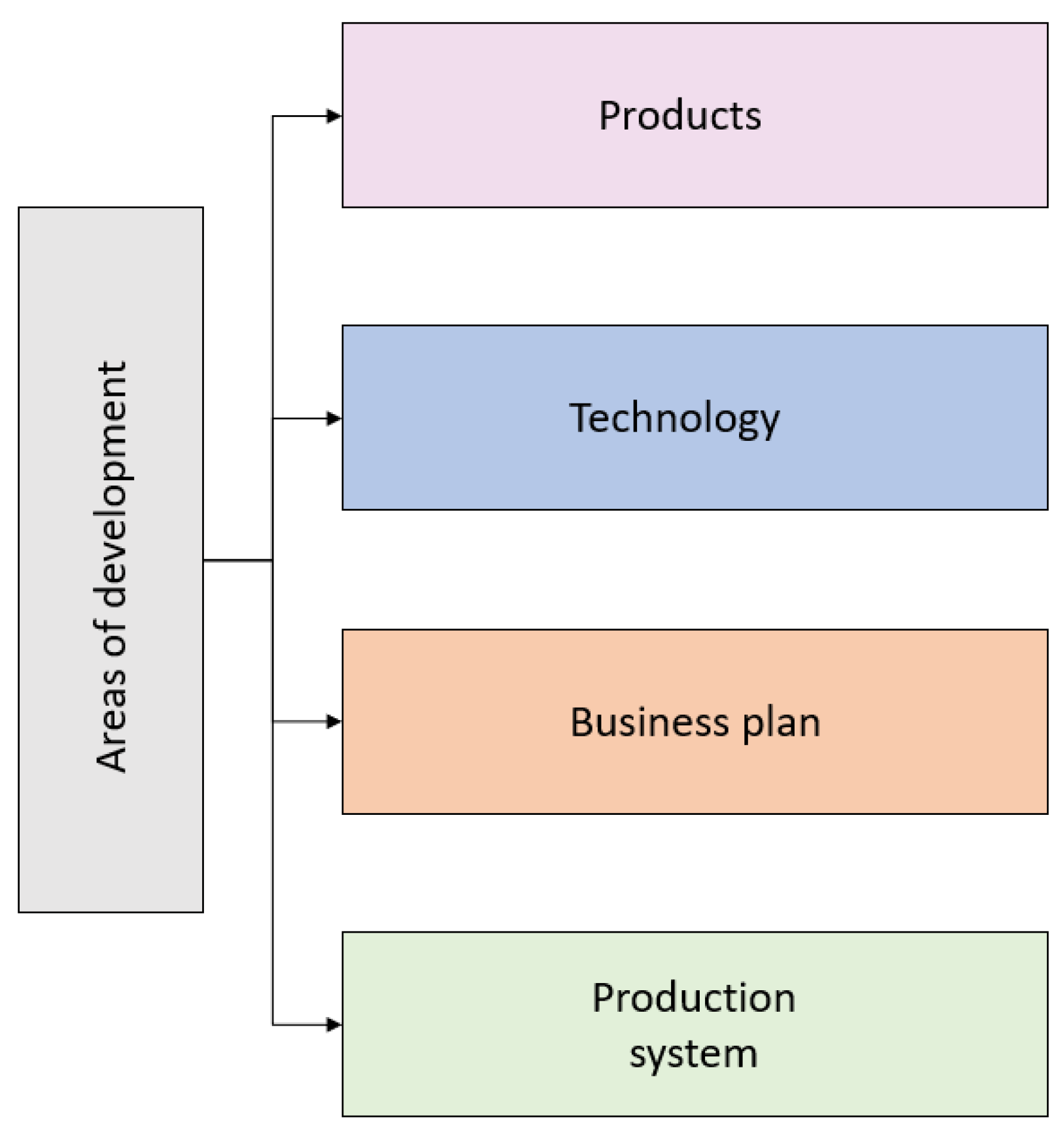
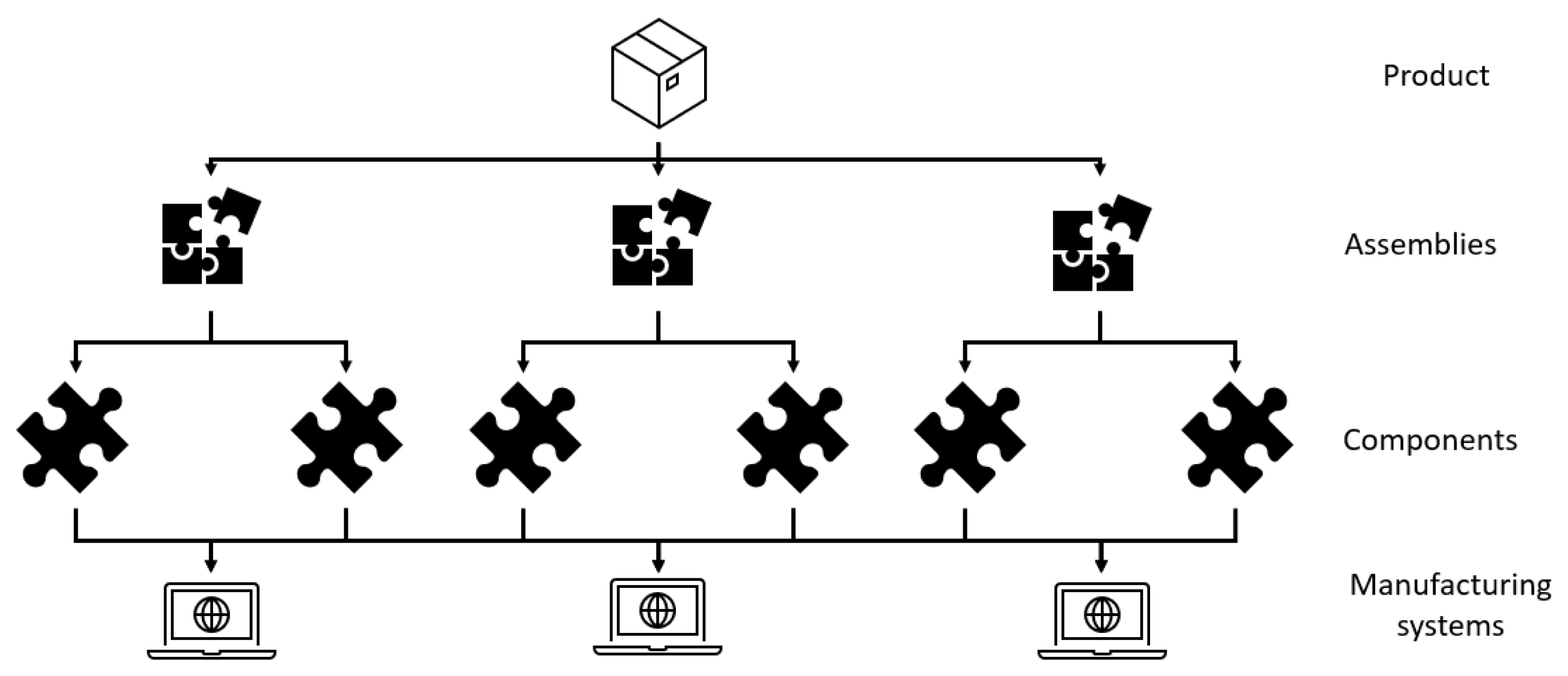
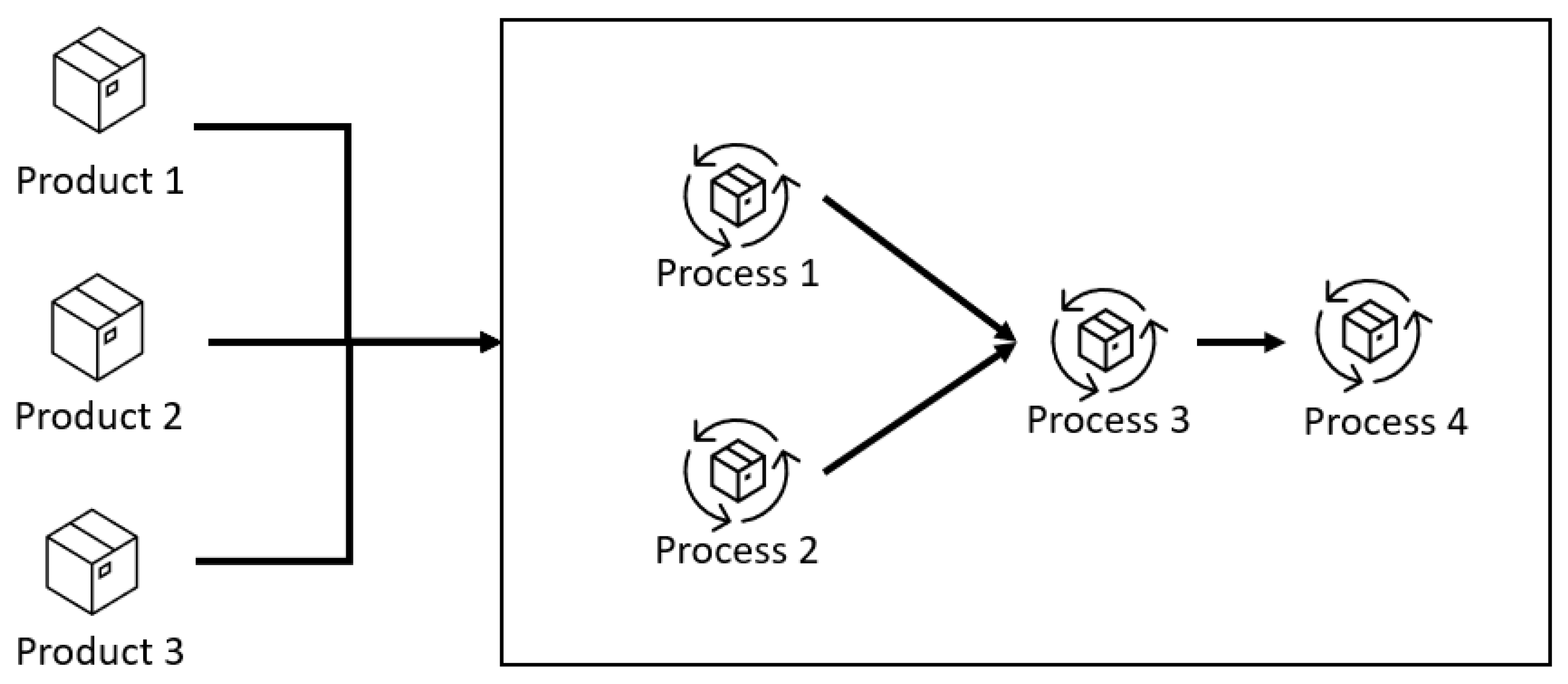

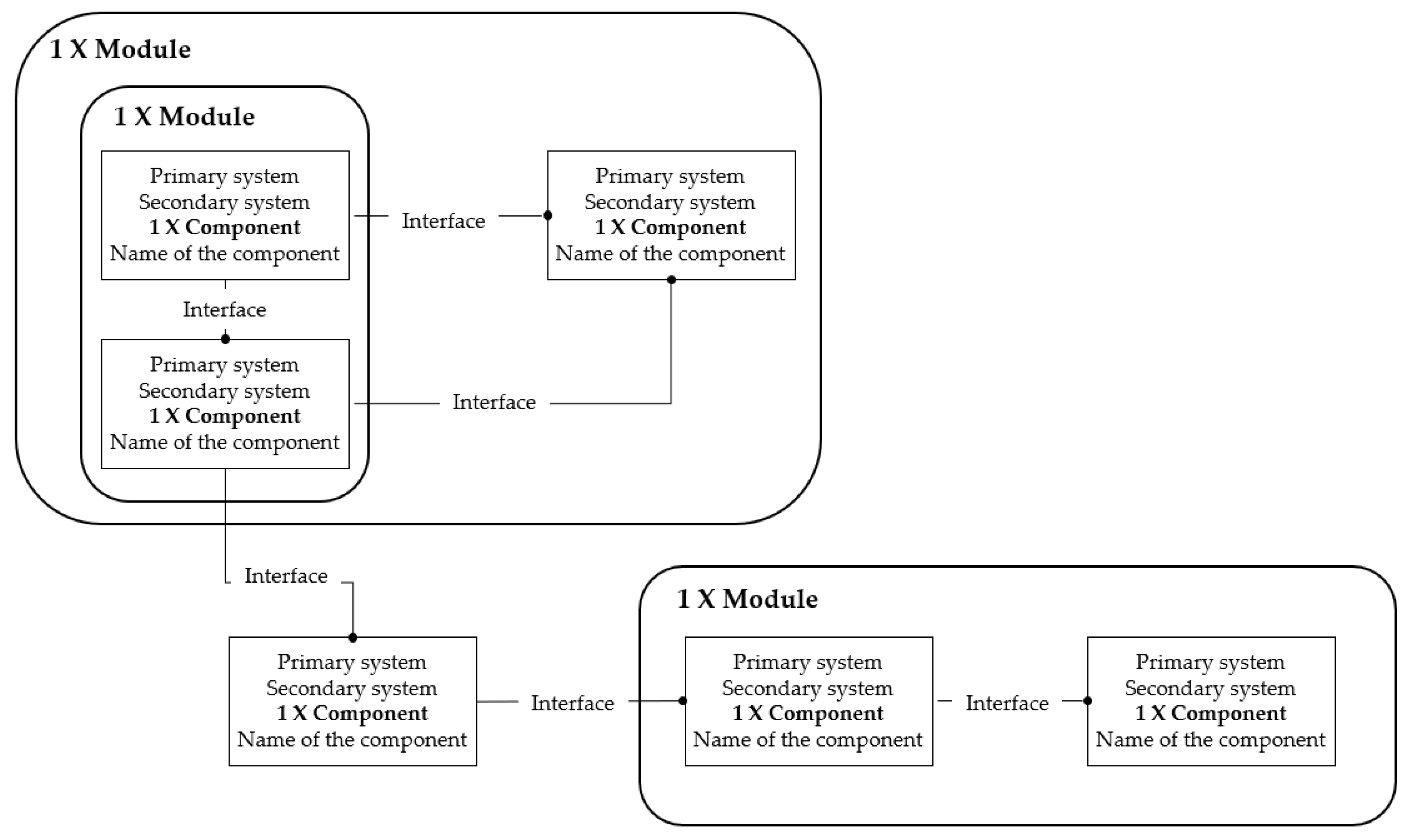
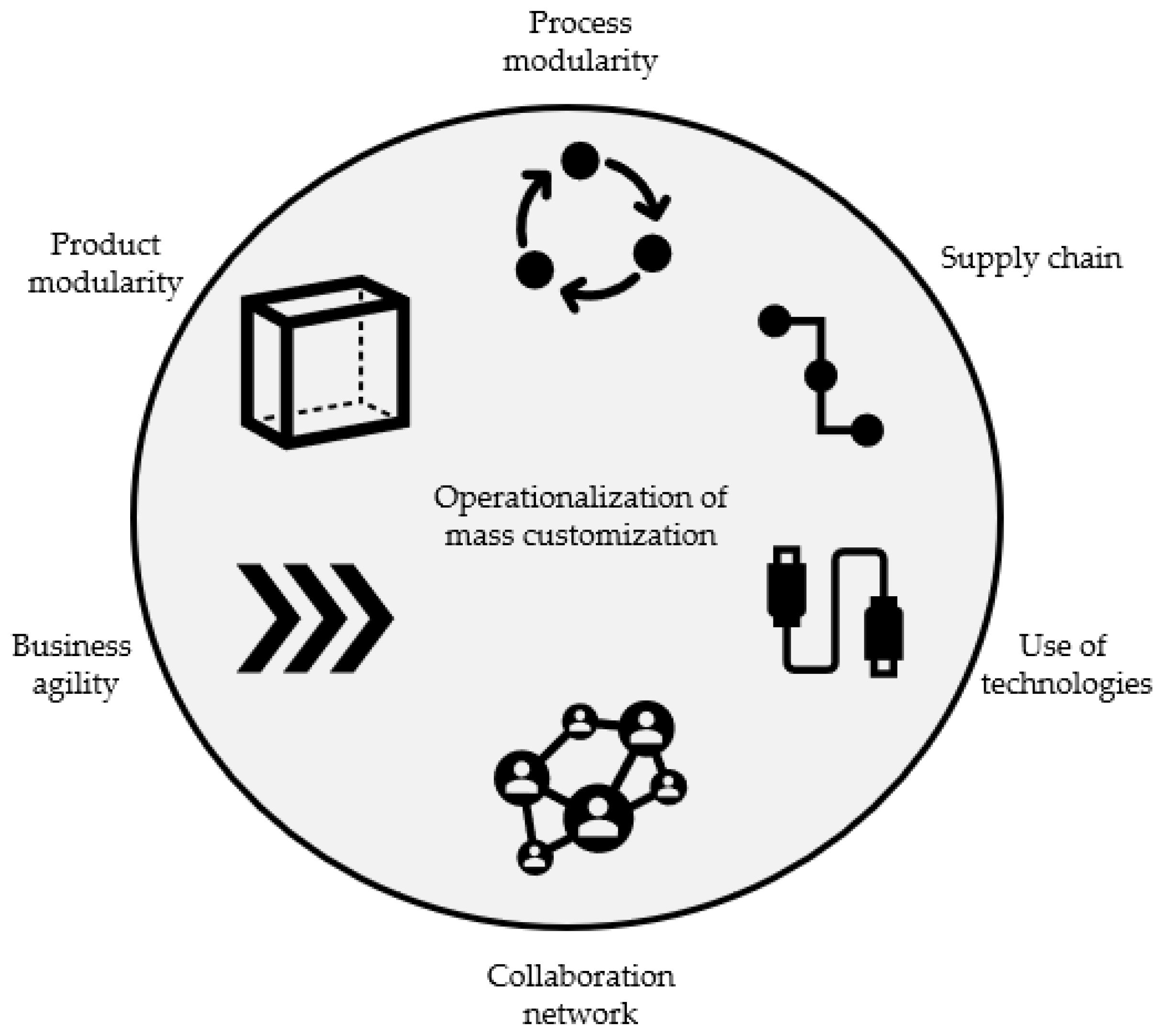
| Source | Number of Publications |
|---|---|
| 2020 IEEE Student Conference on Research and Development | 1 |
| 2021 IEEE International Conference on Engineering, Technology and Innovation | 1 |
| Analyzing the Impacts of Industry 4.0 in Modern Business Environments | 1 |
| Big Data in Small Business: Data-Driven Growth in Small and Medium-Sized Enterprises | 1 |
| Computers in Industry | 2 |
| Energies | 1 |
| Expert Systems with Applications | 1 |
| IEEE Engineering Management Review | 1 |
| IEEE International Conference on Emerging Technologies and Factory Automation | 1 |
| IET Collaborative Intelligent Manufacturing | 1 |
| Industry 4.0 for SMEs: Challenges, Opportunities and Requirements | 2 |
| International Journal of Computer Integrated Manufacturing | 1 |
| International Journal of Mechatronics and Applied Mechanics | 1 |
| International Journal on Interactive Design and Manufacturing | 1 |
| Journal of Computational Design and Engineering | 1 |
| Journal of Intelligent Manufacturing | 2 |
| Journal of Manufacturing Systems | 2 |
| Journal of Manufacturing Technology Management | 1 |
| Journal of Risk and Financial Management | 1 |
| Journal of Science and Technology Policy Management | 1 |
| Lecture Notes in Information Systems and Organisation | 1 |
| Lecture Notes in Mechanical Engineering | 3 |
| Management and Production Engineering Review | 1 |
| Managing Technology for Inclusive and Sustainable Growth | 1 |
| Operations Research and Decisions | 1 |
| Procedia Manufacturing | 4 |
| Proceedings—2018 6th International Conference on Enterprise Systems | 1 |
| Proceedings of International Conference on Computation, Automation and Knowledge Management | 1 |
| Proceedings of International Conference on Computers and Industrial Engineering | 1 |
| Proceedings of the 20th International Conference on Engineering and Product Design Education | 1 |
| Proceedings of the International Conference on Industrial Engineering and Operations Management | 1 |
| Sinergie | 1 |
| Springer Proceedings in Business and Economics | 1 |
| Studies in Systems, Decision and Control | 1 |
| Supply Chain Management | 1 |
| Sustainability (Switzerland) | 2 |
| Technological Forecasting and Social Change | 1 |
| TEM Journal | 1 |
| Thunderbird International Business Review | 1 |
| Success Factors | Perceived Benefits of Implementing Industry 4.0 Technologies | Digital Knowledge | External Support |
|---|---|---|---|
| Huang et al. [23] | X | ||
| Chatterjee et al. [24] | X | ||
| Somohano-Rodríguez and Madrid-Guijarro [25] | X | ||
| Ghobakhloo and Ching [26] | X | X | |
| Hopkins [27] | X | ||
| Horváth and Szabó [28] | X | ||
| van Lopik et al. [29] | X | X | |
| Ratnasingam et al. [30] | X | ||
| Ghobakhloo and Iranmanesh [31] | X | X | |
| Stentoft et al. [32] | X | ||
| Moeuf et al. [33] | X | ||
| Pech and Vrchota [34] | X | ||
| Garzoni et al. [35] | X | X | |
| Türkeş et al. [36] | X | ||
| Arcidiacono et al. [37] | X | ||
| Cimini et al. [38] | X | ||
| Ali et al. [39] | X | ||
| Ghobakhloo and Fathi [40] | X | X | |
| Total | 8 | 10 | 5 |
| Characteristics | Torres [45] | Moeuf, Lamouri, Pellerin, Tamayo-Giraldo, Tobon-Valencia, and Eburdy [33] | Castagna, Centobelli, Cerchione, Oropallo, Shashi, and Strazzullo [46] | Harris, Yarbrough, Abernathy, and Peters [47] | Mittal, Khan, Purohit, Menon, Romero, and Wuest [48] |
|---|---|---|---|---|---|
| Significant management involvement | X | ||||
| Short-term strategic planning | X | ||||
| Absence of experts in specific functions | X | X | |||
| Low production volume | X | X | |||
| High production cost | X | ||||
| Strategy focused on flexibility and responsiveness | X | X | X | ||
| Proximity to customers | X | X | |||
| Variety of products | X | X | X | ||
| Dependence on a collaborative network | X | ||||
| Low complexity and rather informal organizational structure | X |
Disclaimer/Publisher’s Note: The statements, opinions and data contained in all publications are solely those of the individual author(s) and contributor(s) and not of MDPI and/or the editor(s). MDPI and/or the editor(s) disclaim responsibility for any injury to people or property resulting from any ideas, methods, instructions or products referred to in the content. |
© 2023 by the authors. Licensee MDPI, Basel, Switzerland. This article is an open access article distributed under the terms and conditions of the Creative Commons Attribution (CC BY) license (https://creativecommons.org/licenses/by/4.0/).
Share and Cite
Bouchard, S.; Gamache, S.; Abdulnour, G. Operationalizing Mass Customization in Manufacturing SMEs—A Systematic Literature Review. Sustainability 2023, 15, 3028. https://doi.org/10.3390/su15043028
Bouchard S, Gamache S, Abdulnour G. Operationalizing Mass Customization in Manufacturing SMEs—A Systematic Literature Review. Sustainability. 2023; 15(4):3028. https://doi.org/10.3390/su15043028
Chicago/Turabian StyleBouchard, Stéphanie, Sébastien Gamache, and Georges Abdulnour. 2023. "Operationalizing Mass Customization in Manufacturing SMEs—A Systematic Literature Review" Sustainability 15, no. 4: 3028. https://doi.org/10.3390/su15043028
APA StyleBouchard, S., Gamache, S., & Abdulnour, G. (2023). Operationalizing Mass Customization in Manufacturing SMEs—A Systematic Literature Review. Sustainability, 15(4), 3028. https://doi.org/10.3390/su15043028








